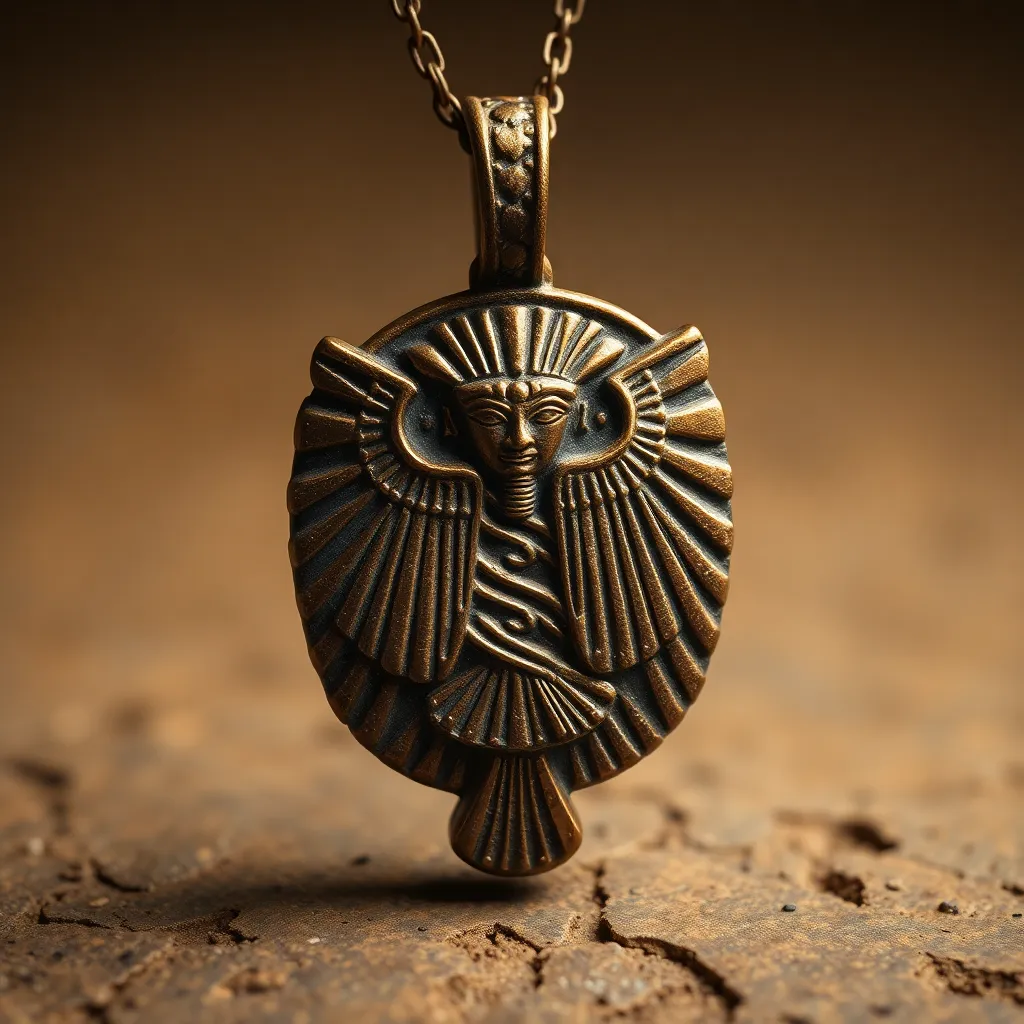Unlocking the Power: The Significance of Amulets in Ancient Egypt
I. Introduction
Amulets in Ancient Egypt were small objects believed to hold protective and magical properties. They were worn or placed in specific locations to ward off evil, attract good fortune, or provide comfort in the afterlife. The historical and cultural significance of amulets is profound, as they reflect the beliefs and practices of one of the world’s oldest civilizations.
This article aims to explore the multifaceted roles of amulets in Ancient Egyptian society, shedding light on their origins, types, uses in daily life, funerary practices, connections to religion, and their legacy in modern times.
II. Historical Background of Amulets in Ancient Egypt
The use of amulets in Ancient Egypt dates back to the pre-dynastic period, around 4000 BCE. Initially, simple shapes and natural objects were used, but as civilization progressed, the designs became more intricate and symbolic.
Over time, amulet designs evolved, reflecting changes in religious beliefs, artistic styles, and available materials. During the Middle Kingdom (circa 2055–1650 BCE), more sophisticated techniques emerged, allowing artisans to create more detailed and personalized amulets.
Throughout various periods, including the Old Kingdom, Middle Kingdom, and New Kingdom, amulets played a crucial role in Egyptian society, adapting to the changing cultural landscape.
III. Types of Amulets and Their Meanings
A. Common materials used in amulet creation
- Stone (e.g., turquoise, lapis lazuli)
- Metal (e.g., gold, bronze)
- Clay (often molded into specific shapes)
B. Specific types of amulets and their associated powers
- Protective amulets: One of the most famous is the Eye of Horus, symbolizing protection, royal power, and good health.
- Fertility amulets: Often depicted as women or symbols of motherhood, these amulets were believed to enhance fertility and ensure safe childbirth.
- Amulets for safe passage to the afterlife: Items like the scarab beetle were placed in tombs to assist the deceased in navigating the afterlife.
C. Symbolism behind the designs and inscriptions
Many amulets featured inscriptions or symbols that conveyed particular meanings or invoked specific deities. The designs often reflected the wearer’s social status, personal beliefs, or aspirations, making them deeply personal items.
IV. The Role of Amulets in Daily Life
A. Amulets as personal items
Amulets were worn by individuals across all social classes, from pharaohs to commoners. They served as personal talismans and were often passed down through generations, signifying family heritage and protection.
B. Their place in family life, health, and protection
Families would often possess amulets to guard against illness and misfortune. It was common for mothers to give fertility and health amulets to their children to ensure their well-being and longevity.
C. The significance of amulets in rituals and ceremonies
Amulets played a crucial role in various rituals and ceremonies, often being incorporated into rites of passage, such as marriages and funerals, to invoke divine favor and protection.
V. Amulets in Funerary Practices
A. The use of amulets in burial practices and tomb artifacts
Amulets were commonly placed in tombs and burial sites to protect the deceased on their journey to the afterlife. They were often found among grave goods, alongside mummies and other offerings.
B. Beliefs surrounding amulets’ power in the afterlife
The Egyptians believed that the right amulets could help the deceased navigate the challenges of the afterlife, ensuring their safe passage and acceptance into the realm of the dead.
C. Notable archaeological finds and their implications
Many tombs, such as that of Tutankhamun, have revealed a plethora of amulets, providing insights into their significance and the beliefs surrounding death and the afterlife in Ancient Egypt.
VI. The Connection Between Amulets and Ancient Egyptian Religion
A. Amulets as tools for invoking divine protection
Amulets served as conduits for divine protection, often inscribed with names of gods or symbols representing divine qualities. This allowed individuals to invoke the favor and assistance of the deities.
B. The relationship between mythology and amulet design
The designs of amulets were often inspired by Egyptian mythology, with symbols and figures representing gods, goddesses, and mythological stories that conveyed powerful protective qualities.
C. Rituals involving amulets and the priesthood’s role
Priests played a significant role in the creation and consecration of amulets, often performing rituals to imbue them with sacred power before they were distributed to the faithful.
VII. Modern Interpretations and Legacy of Amulets
A. The resurgence of interest in ancient amulets in contemporary culture
In modern times, there has been a renewed interest in ancient Egyptian amulets, with many people seeking replicas for personal use or decorative purposes, often believing in their protective qualities.
B. The impact of ancient Egyptian amulet practices on modern spiritual practices
Many contemporary spiritual practices draw inspiration from ancient Egyptian beliefs, incorporating amulets into rituals intended for protection, luck, and health.
C. Preservation and study of amulets in museums and research
Amulets are valuable artifacts for historians and archaeologists, providing insights into the beliefs, cultures, and daily lives of ancient Egyptians. Museums around the world preserve and exhibit these historical items, ensuring their legacy continues.
VIII. Conclusion
In conclusion, amulets held immense significance in Ancient Egyptian society, acting as powerful symbols of protection and belief. Their multifaceted roles—from personal items to essential components of funerary practices—highlight their importance in the daily lives of the Egyptians.
The enduring legacy of amulets continues to fascinate modern audiences, illustrating the universal human desire for protection and connection to the divine. As we reflect on the power of belief and the ways in which it manifests, we can appreciate the profound impact that these small yet significant objects had on the ancient world.




